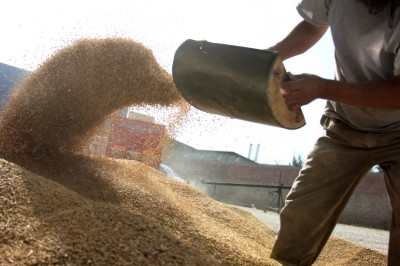US ag industry sees 25 grain, feed, confined space related deaths in 2015

Researchers in the Agricultural Safety and Health Program at Purdue University recently released their 2015 report on injuries and deaths that were related to agricultural confined spaces including facilities for grain storage, handling and feed grinders/mixers and feed/forage wagons.
At 47, the total number of incidents reported was down, but with 25 deaths, 2015 had the second highest number of fatalities in recent years, said Bill Field, professor of agricultural safety and health at Purdue.
Attention to the topic has been increasing risk awareness and interest in safety training, he told FeedNavigator. “About one-fifth of all the deaths are [workers] under 21 and it’s their first day, or first week, of the job – it’s gross negligence on the part of a manger not to orient the kid before putting them in a grain bin.”
Civil litigation also has become more prevalent after incidents, he said. “I can remember when owner or operators could testify and say, ‘I’ve never heard of this’ – but there’s nobody who stores grain at a commercial site or exempt site that can say that today.”
For the last several years, the group has received funding support from the US Department of Labor’s Susan Harwood Training Program, said researchers. “This support has allowed Purdue University to conduct expanded surveillance to capture a wide range of agricultural confined space cases including but not limited to entrapments in grain, asphyxiations, entanglements, falls and electrocutions,” they added.
Since 1962, the group has recorded 1,873 cases, of which 62% have resulted in fatalities, they said. “Based upon prior research, it is estimated that the documented annual cases represent approximately 70% of the total cases that have actually occurred annually in the Corn Belt,” they added.
Report details
In 2015, the group documented 47 fatal and non-fatal cases, said researchers, and 51% of all the cases dealt with grain entrapment.
Of the cases, 24 were grain entrapments, six were falls either from or into grain storage facilities, six were equipment entanglements, three were cases where a victim was struck or pinned while working in an enclosed space and there were four asphyxiations and drownings, they said.
“This is the first time since 2010 that the number of fatal cases exceeded the number of non-fatal cases for all confined space incidents,” they said. “The decrease in the total number of cases is due to a significant drop in reported non-fatal cases, which dropped to 22 compared to 40 non-fatal cases in 2014 and 45 in 2013. Fatal cases for 2015 were 25 and can be compared against 31 in 2014 and 24 in 2013.”
The overall number of cases also mark a 34% decrease from incidents reported in 2014, said researchers. And, it is part of a dropping five-year average of total cases.
Iowa and Wisconsin had the highest number of incidents, fatal and non-fatal, they said. The oldest victim was 86, the youngest was four, and seven cases involved victims younger than 20 years old.
“The 24 grain entrapment cases represent a 37% decrease in entrapments from 2014 when 38 entrapments were recorded,” they said. “This is the lowest number of cases recorded since 2012.”
In 2015, more than half the entrapment cases happened in corn, they said.
“If grain is wet, or not matured fully, then the grain sometimes doesn’t store well and that increases the probability that people are going to have to go in there to work,” said Field. “In most of the cases there was precedence – there was out-of-condition grain involved.”
Limitations and responses
However, it is possible that not all injuries that occur in enclosed spaces like silos or feed bins have been reported, said Field. A majority of the facilities that manage grain and feed are exempt from reporting requirements.
There are about 14,000 commercial grain handling facilities, he said. But about 300,000 farms, feedlots and some feed processing sites were exempted from federal grain handling standards when they were written.
“Since we started [training] four years ago, we’ve added 800 cases,” he said. “There was no way that we’d know these occurred, other than through personal interviews.”
Safety training
More attention and interest has been given to training first responders on how to rescue people trapped in grain, said Field.
“What we train in our classes is they’re either fully engulfed or partially trapped,” he said. “If they’re fully engulfed, depending on the nature of the structure, we recommend they cut the facility to release the grain, and if he’s partially buried, we recommend a type of coffer dam around the person.”
In addition to safety classes, the group has posted information and safety training material free on its website, he said.












